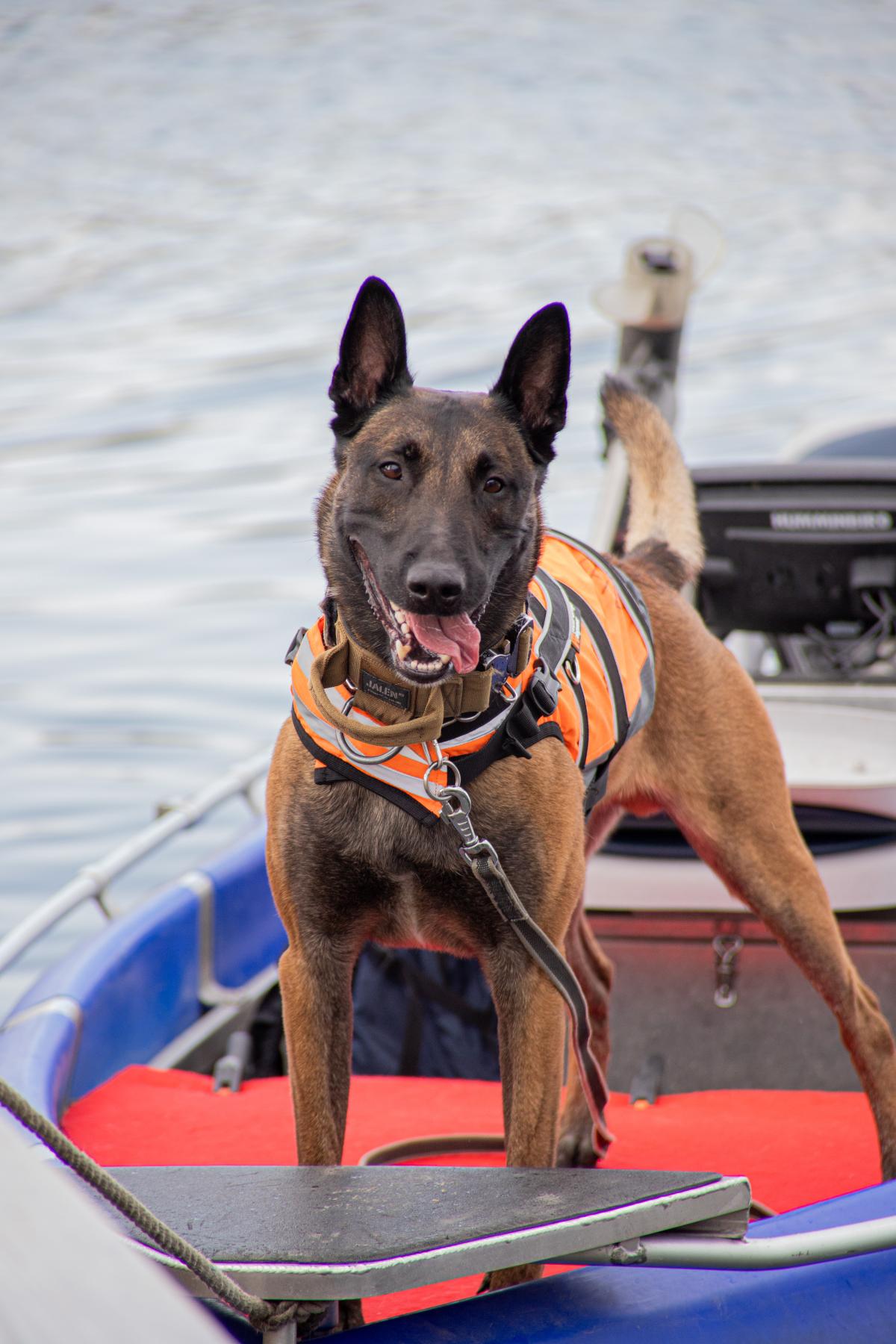Sense of smell is a police dog’s superpower and an invaluable asset to the police

There are more than 200 police dogs in Finland. Training a dog is a long-term process that requires a committed handler. For the police, dogs offer assistance that neither a human nor technology can replace.
When a police dog picks up a scent, the handler must trust the four-legged officer’s instincts, even though the dog’s actions do not always seem logical.
“I’ve often thought that nobody would go in there – I certainly wouldn’t go in there! But even in those situations you follow the dog, even if it seems silly,” says Senior Sergeant Jukka Vänttinen of the Helsinki Police Department K9 Unit.
Trusting the dog is usually worth it. A dog’s sense of smell is a superpower that cannot be replaced by a human or technology. A dog can smell a lost or escaped person, as well as caches and dangerous substances. A dog can be trained to find virtually anything.
Police dogs are versatile professionals
The Helsinki Police Department has some 30 police dogs at different stages of their career. The youngest are puppies that have just started their training and the oldest ones are experienced professionals.
Police dog units are called K9 units, based on the word canine.
Most of the department’s dogs are patrol dogs, of which there are about 20. Skills taught to patrol dogs in basic training include tracking, person and object searches, and the use of force. Each patrol dog is also given its own special search area, such as drugs, explosives, cadavers or flammable liquids.
“The specialty area to be trained is selected according to the department’s needs. The dog must also be suitable for the selected speciality: for example, a dog searching for explosives must be able to move calmly,” Jukka Vänttinen explains.
Several breeds are used as police dogs, but the most common ones are German Shepherd and Belgian Malinois. Most of the dogs are males.
All Finnish police dogs come from the same place, the Police University College Police Dog Training Centre. They are purchased from breeders in different parts of Finland and sometimes also from other European countries.
A long-term colleague
Each police dog has a dedicated handler. The basic training of a dog and a new handler takes three years in total.
After basic training, there is another year of training in the specialised search area.
A graduated police dog will continue to work until the age of ten or so with the same handler. The recruitment of handlers is therefore based on a long-term commitment. Dog training is also a way of life, as the work does not end at the end of office hours: the police dog lives with the handler.
Even though a police dog is primarily a working tool for the police officer, they still get attached to him. The dog is a colleague with whom the handler works for up to ten years.
Occasionally, the handler may be faced with a difficult situation if the dog has to be abandoned in the middle of training. Not all dogs can do the job of a police dog, in which case the dog must be switched. In addition, there must be chemistry between the handler and the dog for the job to go seamlessly.
Long traditions
A police dog is not a pet in the traditional sense, so living with a four-legged officer may require special arrangements. Ideally, a police dog should be social and relaxed while on leisure. However, a patrol dog needs to be feisty at work, so not all police dogs are easy to handle off duty.
Such dogs may not be able to live indoors with the rest of the family. Vacations must also be planned so that the police dog can accompany the family or a suitable place for the dog can be arranged.
“The dog handler is obliged to keep the dog in good working condition. Most of the training takes place at leisure,” Vänttinen says.
Police dogs have long traditions in Finland. Finland’s first police dog, Hektor von der Volmeburg, came to Helsinki in 1909. The police dog activity became livelier from the 1950s onwards, at which time the use of dogs at ports started because various types of illegal substances were transported via the ports.
Last year, a police dog was used more than a thousand times for various duties in Helsinki. Of these, 250 involved tracking and 250 searching for a person.
In addition to the dog and the handler, another police officer with experience in working with dogs is part of the K9 patrol.
Resisting persons obey a police dog better than a human
A police dog is also one of the police’s tools for the use of force. For example, if a dangerous person needs to be captured, a police dog may be sent ahead if the person does not obey the orders of the police officer. The mere presence of a dog is often a sufficient deterrent. Nine out of ten thieves do not want to fight with a police dog, Jukka Vänttinen estimates.
“A dog can usually get people come out of hiding quickly. Most of them tell us that they will go with us as long as we take the dog away,” Vänttinen says.
In training on the use of force, the dog is taught to bite an object on command, but more lenient means such as orders and threats to use the dog are always tried first. The presence of a police dog reduces the number of situations where actual use of force is necessary.
The dog also increases the safety of the working police officers.
In addition to patrol dogs, the police have specialist dogs whose training is shorter than that of patrol dogs, taking two years. Special Intervention Unit Karhu also has its own police dogs.
The specialist dogs have their own special duties, but they are not taught the use of force, for example. That is why other breeds such as Labrador Retrievers and Border Collies are also well suited for these positions.
Most specialist dogs search for drugs or explosives, or are trained to detect the smell of cadavers, for example. Dogs can also be trained to search for weapons or money. The use of dogs in searches is becoming more and more diverse: in recent years, dogs have been trained to search for secretions and technical devices. With such skills, the police can more extensively utilise the dogs.
A specialist explosives dog can also look for weapons, a specialist narcotics dog for money and a cadaver dog for secretions.
“A cadaver dog can be used to search for a drowned person, for example. The dog is placed in the bow of a boat from where he can mark a more precise area for divers to investigate. Some cadaver dogs are also able to detect other secretions, which has been useful in sexual offence investigations, for example,” Vänttinen explains.
socialShareGray




